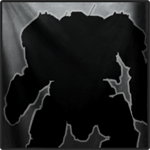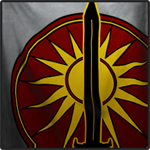I've been playing the locust for a couple of months now, and I have developed an uncanny love for it. Why did I purchase the full set of these tiny, fragile garbage 'mechs? I don't think I'll ever fully know, but they are as adorable as little metal kittens and therefore belong on the battlefield.
Wait. That doesn't...
My logic...
Maybe I need a nap. Anyway, I’m about to get to the good bit.
The locust's armor is only molecules thick, and its torso is almost all categorized as CT, meaning that damage-spreading is nearly impossible. LRMs and laser hits which would only lightly jostle a respectable 'mech will strip the tinfoil armor quite off the locust in a single instant. All this comes to mean that the little bug can't take even a single substantial hit. It's like playing Super Mario without a mushroom. Even Goombahs are lethal.
How can you possibly survive, let alone deal out damage? Only by never being targeted by an enemy 'mech. This is a delightful challenge, and one which teaches the pilot a whole new level of battlefield positioning. It teaches him the meaning of target acquisition, and brings to him a mighty power of battlefield awareness. But only after a fiery gauntlet of fail has been navigated.
The trick to beginning to play the locust, I've found, is staying very close to enemy light 'mechs and painting yourself gold or crimson. At the same time.
No. Wait. The other thing.
The trick to beginning to play the locust, I've found, is staying right underfoot among your team's biggest, heaviest 'mechs, and thereby achieving the safest position on the battlefield. To explain, consider this: when an enemy sights a mighty Daishi, whose every thunderous footfall spells the deaths of thousands, that enemy would have to be completely bonkers to instead fire upon the tiny, fast-moving speck which darts about beneath its feet, whose pilot is engaged in pounding the "shot likkle laserz" button and praying feverishly for miraculous deliverance. In other words, attach yourself to a durable, threatening-looking teammate, and make sure the baddies always see him first. Thus can the locust avoid any attention at all on the battlefield, and thereby go about its minuscule existence in relative peace for longish periods.
The locust can survive seconds, even minutes during a match by taking advantage of the enemy's foolish habit of shooting the most dangerous target instead of the least. Using his folly to your advantage, you can be free to dart about and slightly annoy the hell out of every enemy 'mech within 100 meters of your big distracting buddy, sweeping up kill-assists and earning more and more glory. When the match is over, and you look down from your parachute-suspended seat on the exploded ruins of your little metal friend, you can be confident in the knowledge that you have succeeded as a locust pilot if you beat even one player during that match for damage. Nobody can expect more from a locust. You have reached the point of adequacy.
And then you achieve the next level. You have depended for your life through many short, grueling matches on your ever-improving ability to intuit the sight-lines of your enemies and to keep more threatening things in them than yourself. You have learned every nook and cleft in the terrain which is knee-high to a decent 'mech but which can cozily accommodate a desperate locust. Soon you find that you instinctively follow the contours of the battle, expanding and contracting only when it is safe and discharging your tiny array of weaponry to its greatest effect. You find yourself reading every move of your friends and enemies by the minute dispositions of their little glowing triangles on your mini-map. You dart under pedestrian walkways which would clothesline another 'mech, through impassable gaps among buildings, and under the inexplicably bulletproof surfaces of rivers and lakes. Your index finger automatically pounds the "acquire target" key, and you find the perfect moment to strike with the full fury of three tiny lasers, scything off the arm or leg of some foolish and otherwise-occupied enemy. Your average damage in each match soars from 60 to 240 and even into the 300s, and you begin to outscore even non-disconnected players.
Suddenly, enlightenment- you get your first kill. A Daishi, its pilot in his unshakable confidence ignoring his paper-doll readout, has it fatefully not ignored by the locust pilot. The little 'mech takes a sensational risk and blasts at 1/7 the speed of sound around a corner. Its small lasers blaze with wrath. The Daishi incredulously explodes, its pilot unsure what to make of this new flying-out-of-the-cockpit sensation, and wondering what the hell sort of tiny joke 'mech he had just spotted, and why it was so angry. The locust pilot, his bloodlust only just awoken, dashes triumphantly around a bend and is felled magnificently by the stray whip of a friendly Atlas's medium laser.
From this day forth, you hold in your hand the Mighty Water-Balloon of Final Judgment. When you see an enemy player whose vital torso is red with hubris, you can choose to bring justice on him, hurling yourself out of cover to end his ignoble existence. You expend the righteous energy of your life against him like an avenging spirit, but even more like a thrown water balloon. Occasionally, your delicate membrane will inexplicably remain unpunctured by the fire of your target's grief-stricken teammates, and you may fight on to great glory. Much more often, you will splatter harmlessly against just the wrong bit of your target, and have your face idly imploded by his lazy counter-blow. The power is finally yours to choose the manner and time of your death, and it is a great power and responsibility to bear.
Unless, of course, your air intake tragically gobbles an innocent high-velocity sparkling dove*, and your engine explodes with regret. This cruel fate awaits a considerable fraction of even the most skilled locust pilot's forays.
Now that you have weathered the fires of the learning process, you zoom around the field of battle with confidence and wrath, every match justifying your inclusion in the team against all odds. When you're not being accidentally nailed by a stray barrage of friendly or enemy fire, or having a fateful encounter with a high-velocity sparkling dove, you are the ultimate end to the pay-to-win conspiracy theory, and your antics are a glory to look upon for the incredulous eyes of your ghostly spectators.
When you deign to drive a heavier, saner ‘mech, you will find that your skill is suddenly vastly improved, and your awareness of the battle’s shape and your place in it is forever sharpened. But you also find you miss the thrill of locust piloting, and a thirst for the life on the ragged edge of destruction calls you back to the little deathtrap which has become your lifelong friend.
*Note: Amateur bird-watchers agree that it is often very difficult to discern the difference between the rare high-velocity sparkling dove and the average gauss projectile.
*EDIT*ed to first add a thank-you for your loving responses:

And edited secondly to add a screenshot to shamelessly brag of a recent and totally abnormal game in my locust "Cassius" (my first three locusts are named after Dante's three capital traitors, whose bodies are forever gnawed by Satan in the ninth circle of hell):
The legend is invisible. From left to right, the data shows FACTION, UNIT, NAME, 'MECH, STATUS, MATCH SCORE, KILLS, ASSISTS, DAMAGE DEALT, PING.

A grand total of five enemy 'mechs were dead by the end of the game, despite my best efforts. I flung the water balloon to great effect, but the team clearly needed at least a couple more locusts! %D
Also, remember to comment if you liked this post. That keeps it closer to the top of the General Discussion list. Thank you for your support!
Edited by Oogalook, 29 October 2014 - 03:33 PM.



































